You’ll master gemstone setting with these five platinum techniques: prong settings that maximize light exposure using four or six prongs at precise angles, bezel settings that completely encase stones for superior protection, channel settings that position gems side-by-side in parallel tracks, pavé settings that transform surfaces into glittering diamond arrangements, and tension settings that suspend stones without visible support. Platinum’s malleability, density, and strength make each technique exceptionally secure while showcasing your gemstones’ brilliance—and there’s much more to discover about perfecting these methods.
Prong Setting Excellence for Maximum Gemstone Security
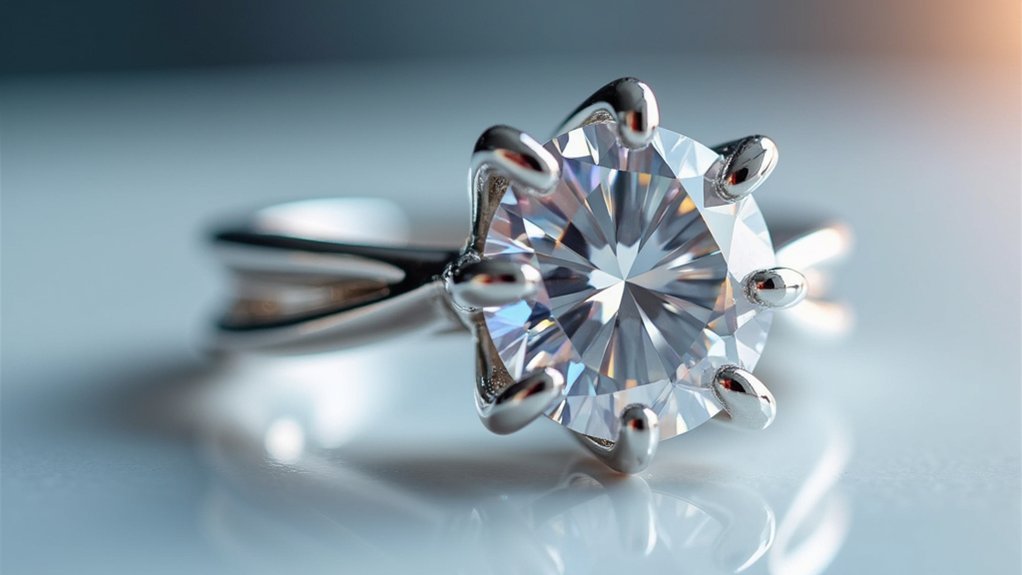
When you’re looking to showcase a gemstone’s natural beauty while guaranteeing maximum security, prong setting stands out as the most popular and effective technique. This method allows maximum light exposure, dramatically enhancing your gemstones’ brilliance and sparkle through ideal precious metals configuration.
You’ll want to use four or six prongs positioned at 70 or 90-degree angles to minimize metal visibility while maximizing security.
For your platinum setting, guarantee high-quality prongs incorporate gallery wires that stabilize and limit movement, preventing stone loss from inadequate structure.
Choose prong thickness carefully—thinner prongs appear delicate while providing adequate support.
Delicate prong design balances visual elegance with structural integrity, ensuring your precious gemstones remain beautifully displayed and completely secure.
Remember that regular maintenance and inspection are essential for your platinum settings, guaranteeing prongs remain intact and your gemstones stay securely positioned during normal wear.
Bezel Setting Mastery With Platinum’s Density Advantages
While prong settings excel at maximizing light exposure, bezel settings offer superior protection by completely encasing your gemstone’s girdle in a thin metal strip.
Platinum’s exceptional density advantages make it the ideal durable metal for this technique, providing unmatched security for your precious gemstones.
You’ll appreciate platinum’s malleability when shaping precise bezels that fit snugly around stones while maintaining design integrity.
The metal’s high melting point of 1768°C requires mastering advanced soldering techniques for proper heat application.
This hypoallergenic material proves perfect for engagement rings, as bezels minimize skin contact while resisting daily wear abrasion.
Platinum’s strength guarantees your bezel setting withstands years of use without compromising the gemstone’s protection, making it an excellent investment for fine jewelry.
Channel Setting Precision Using Platinum’s Malleability
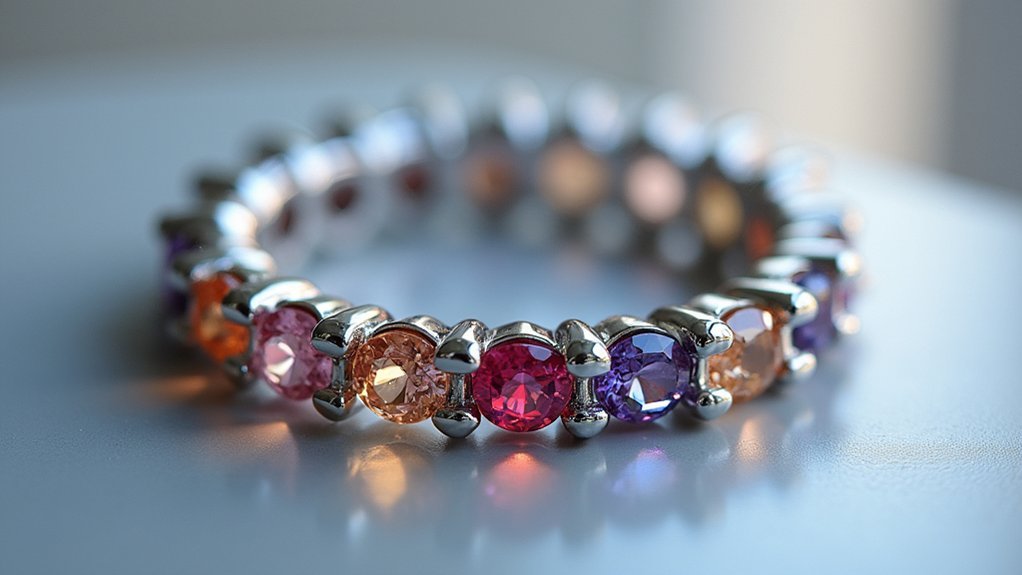
Channel settings create stunning visual continuity by positioning gemstones side-by-side within parallel metal tracks, and platinum’s exceptional malleability gives you unparalleled precision when crafting these sophisticated mountings.
You’ll find platinum’s workability allows precise channel shaping while maintaining structural integrity. The density requires careful engineering to balance strength with aesthetics.
| Channel Setting Benefits | Platinum Advantages |
|---|---|
| Maximum light exposure | Natural white hue enhancement |
| Floating stone effect | Superior malleability for precision |
| Protected gem edges | Exceptional durability against wear |
When setting your gemstones, focus on perfect alignment and consistent spacing. Platinum’s resistance to abrasion protects stones from daily wear while its malleability guarantees snug fits. This combination maximizes brilliance and creates seamless visual flow throughout your channel setting design.
Pavé Setting Techniques for Platinum’s Superior Durability
Pavé settings transform jewelry surfaces into glittering tapestries of closely-set diamonds, and platinum’s exceptional durability makes it the perfect choice for securing these intricate arrangements.
You’ll find that platinum’s superior strength allows tiny gemstones to remain secure even under daily wear, while its malleability enables jewelers to craft precise beads and prongs without obstructing light entry.
When you’re working with pavé settings, you’ll appreciate how platinum’s wear-resistant properties protect the delicate structure holding each stone. The metal’s flexibility lets you create seamless appearances while maintaining structural integrity.
You should expect regular maintenance to keep your pavé setting performing effectively.
Professional inspections guarantee stones stay secure and the platinum maintains its pristine finish, maximizing your jewelry’s brilliance over time.
Tension Setting Methods Leveraging Platinum’s Structural Strength
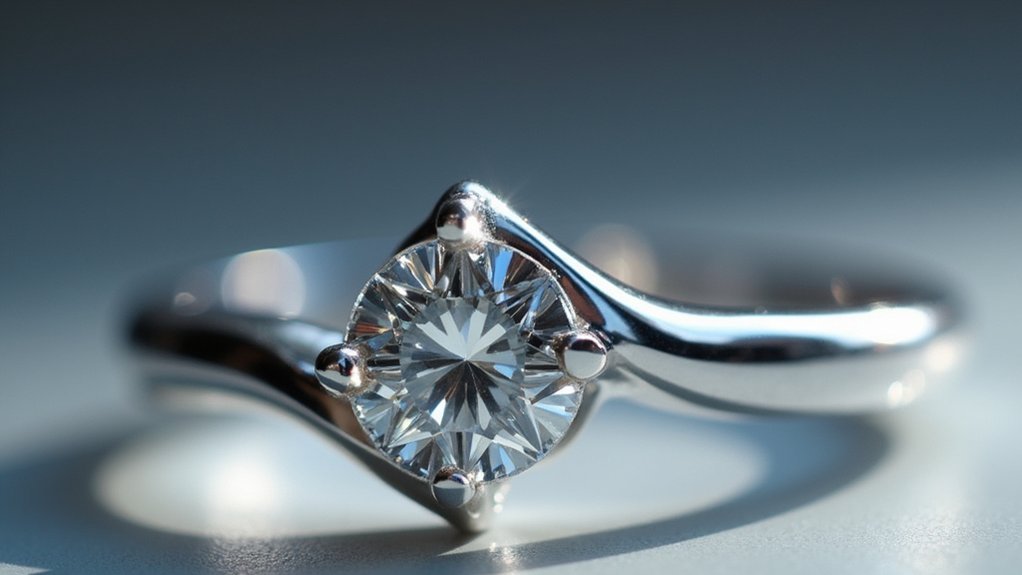
Tension settings revolutionize gemstone mounting by harnessing platinum’s exceptional structural strength to suspend stones without visible support mechanisms.
You’ll find this technique particularly effective with hard gemstones like diamonds and sapphires, as it maximizes light exposure for enhanced brilliance. Platinum’s high melting point of 1768°C guarantees your setting won’t compromise under the necessary pressure.
When you choose tension settings, you’re investing in precise engineering that requires meticulous calibration.
You’ll need a thicker band to provide adequate support, but platinum’s density and durability make this feasible while maintaining a modern appearance.
The result is a striking contemporary design that showcases your gemstone’s beauty while demonstrating platinum’s superior structural capabilities. This method eliminates traditional prongs entirely, creating an elegant floating effect.
Frequently Asked Questions
How Do You Set Precious Stones?
You’ll choose from several methods: prong settings for maximum brilliance, bezel settings for protection, channel settings for multiple stones, pave settings for sparkle, or tension settings requiring strong metals like platinum.
Why Do Jewelers Not Like Platinum?
You’ll find jewelers struggle with platinum’s 1768°C melting point requiring specialized equipment, its 40-60% greater density than gold making manipulation difficult, and its rarity creating material shortages while increasing costs.
What Is the Most Common Gem Setting Style?
You’ll find the prong setting is the most common gem setting style. It’s popular because you get maximum light exposure through your gemstone while maintaining secure placement with four to six metal claws.
Is a Platinum Setting Worth It?
You’ll find platinum settings absolutely worth the investment. They’re thirty times rarer than gold, won’t tarnish or fade, enhance your gemstone’s brilliance, and they’re hypoallergenic for sensitive skin.
In Summary
You’ve now mastered platinum’s unique advantages across five essential setting techniques. Whether you’re creating secure prong settings, leveraging density for bezels, utilizing malleability in channels, maximizing durability with pavé, or harnessing structural strength for tension settings, platinum’s superior properties will elevate your gemstone work. Don’t hesitate to experiment with these techniques—platinum’s forgiving nature and exceptional strength make it the perfect metal for showcasing your most precious stones.



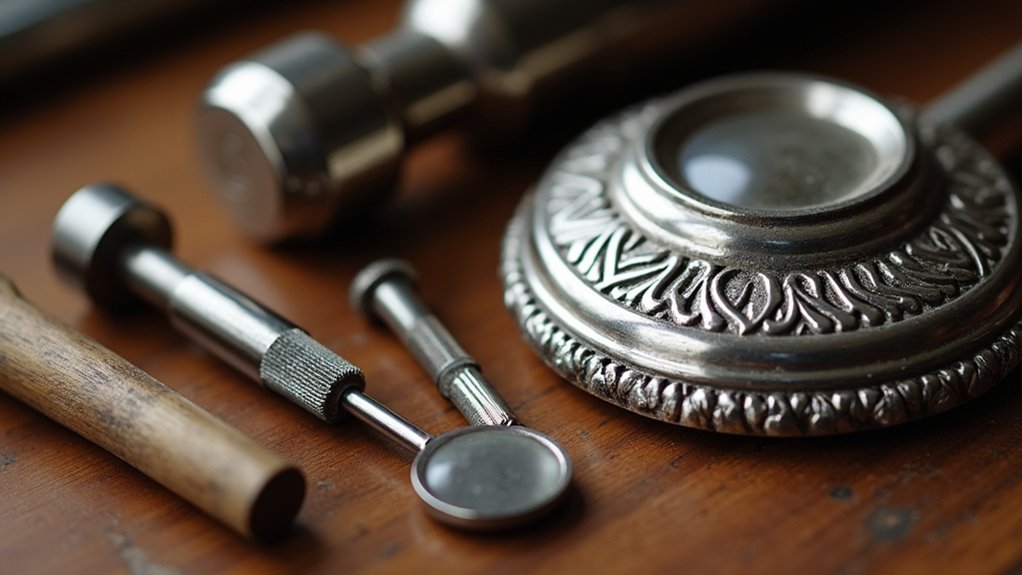
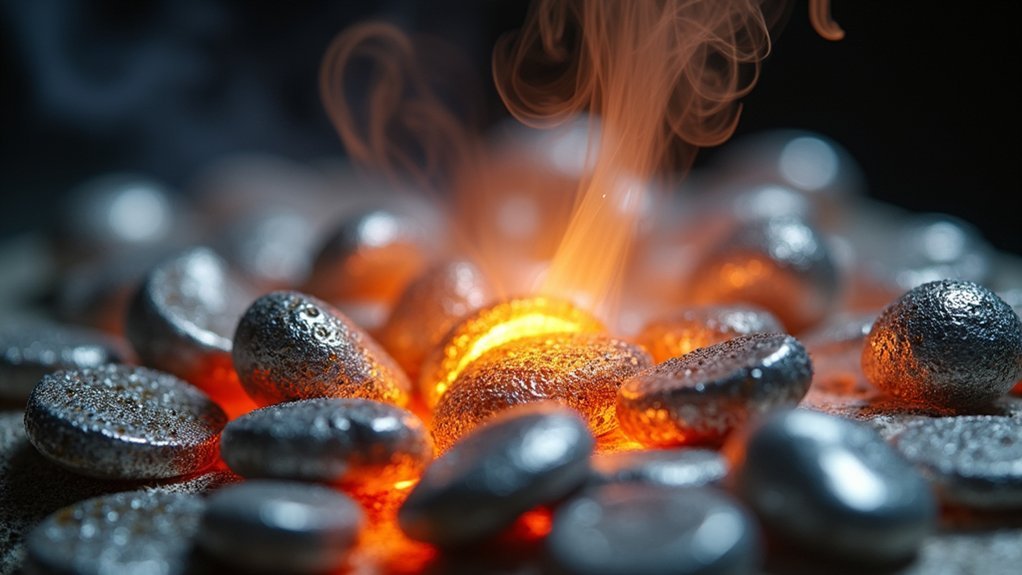
Leave a Reply